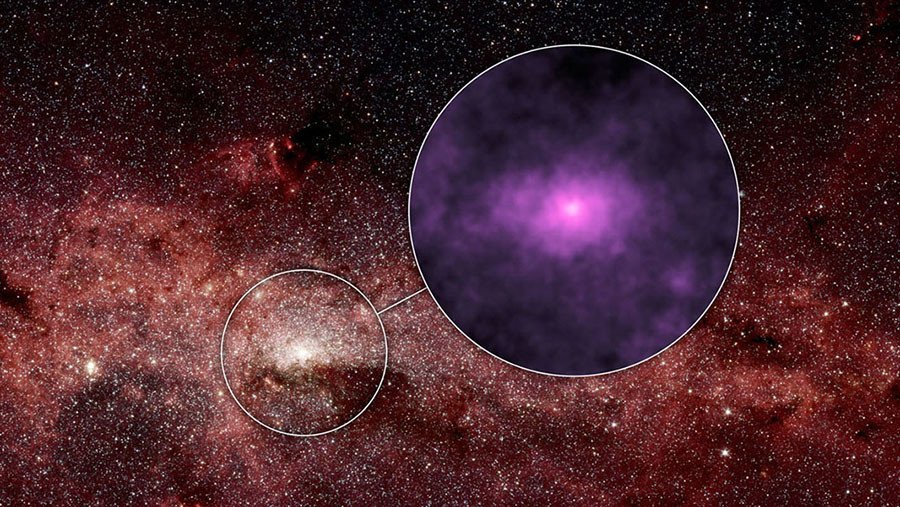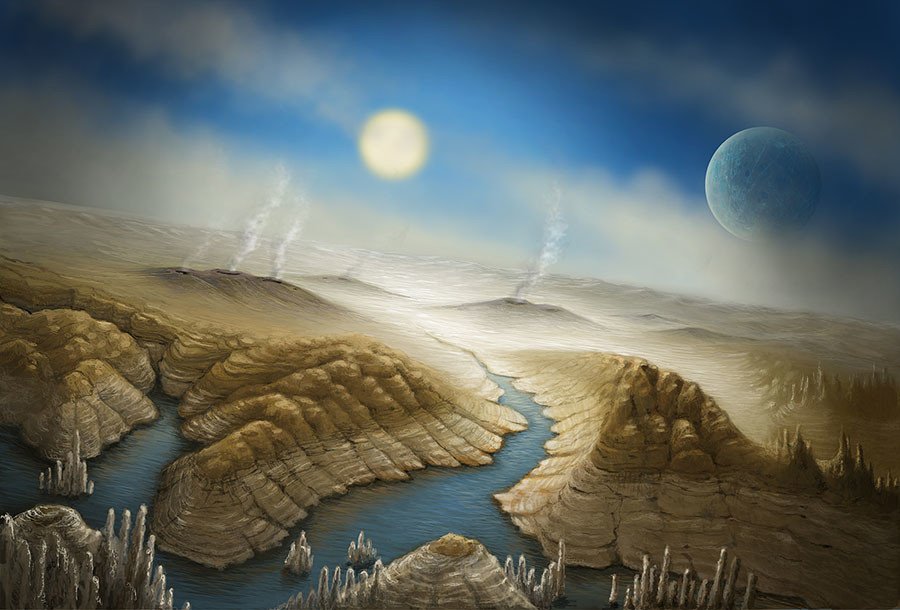Not all about Star Wars: Biggest real space breakthroughs of 2015

Improved imaging technology and space probes going out ever further mean we aren’t just seeing the universe in more detail – our understanding of it is completely changing. Here are the greatest achievements in the past year.
Pluto close-ups
The long game paid off. NASA’s New Horizons took off in January 2006, and had to travel 3.6 billion miles to achieve its goal – the first clear pictures of Pluto. Its planet status officially dismissed as a mid-20th century error since 2005, Pluto suddenly regained its fascination in the minds of astronomers. “I think it’s fair to say that New Horizons gets an ‘A’ for exploration, but we get an ‘F’ for predictive ability,” said the mission head scientist Alan Stern as images started streaming back.
From the presence of water ice, to giant, rocky mountains, to the absence of expected craters, to the apparently recent changes that have happened to the surface, Pluto has confounded scientists, and forced yet another total rewrite of the textbooks. No less surprising are its satellites. With 80 percent of the data to be transmitted from the New Horizons craft in 2016, more surprises are in store.
SpaceX nails landing – at last
After more than two years of gradual progress, gutting near-misses and one humiliating failure, when a Falcon 9 rocket disintegrated in mid-air, SpaceX finally gave Elon Musk an early Christmas present in December, when an intact first stage of the rocket made a successful vertical landing on a giant bulls eye at Cape Canaveral.
UPDATE: SpaceX reports ‘overpressure event’ in Falcon's upper stage liquid oxygen tank http://t.co/QKxkvXe4ebpic.twitter.com/4NbNmkGD5I
— RT (@RT_com) June 28, 2015Musk insists that reusable rockets can cut down the price of a launch from the current $60 million – already a bargain by space standards – to that of just fuel, and a rocket inspection to make sure it hasn’t sustained too much heat and pressure damage. A similar rationale existed behind the Space Shuttles, which turned out to be much more expensive, but Musk has a greater profit motive in achieving his aims.
'Rarest of beasts': Jeff Bezos' space company launches & lands reusable rocket (VIDEO) https://t.co/9CGvFpUsmipic.twitter.com/SxiZcaQ94q
— RT America (@RT_America) November 24, 2015And if he falters, there is competition. The equally driven Jeff Bezos’ Blue Origin vertically landed a less powerful, but still impressive New Shepard sub-orbital rocket in November. The second Space Age is definitely on.
Water on Mars, Ganymede, Enceladus

In a year, when water seems to have been found all over our solar system – on Saturn’s moon Enceladus and Jupiter’s Ganymede – the most attention catching was the confirmation that water flows on Mars.
NASA to make ‘deepest-ever’ dive into icy plume on Saturn’s Enceladus moon https://t.co/emAdhxzRfSpic.twitter.com/x4isz0OGa5
— RT (@RT_com) October 28, 2015100-km deep ocean hidden under surface of Jupiter’s moon #Ganymede – astronomers http://t.co/Zj6hPrtFhepic.twitter.com/EyvbdSzVyF
— RT (@RT_com) March 13, 2015The Mars Reconnaissance Orbiter has photographed streaks running down slopes on the Red Planet. These appear to be bigger when the temperature rises, and change in location all the time, suggesting liquid water is present.
The water is likely a salty brine, and while it could potentially harbor life, this remains an unlikely prospect. Yet, this does not mean that life did not exist in the past on Mars, or could not appear in the future.
Milky Way’s mystery glow

NASA’s orbital NuSTAR telescope, launched three years ago, is able to produce images of our galaxy in hitherto unimaginable detail, but some new discoveries are creating more questions than answers. One is an unexplained bright glow of high-energy X-rays in the Milky Way, around the supermassive black hole Sagittarius A* - 40 light years across - which was publicized by NASA in April.
Zombie howl: Newly discovered X-ray glow could be from matter-hungry stars http://t.co/Ge3iWKMvNspic.twitter.com/Vrg5GWFJVE
— RT (@RT_com) May 2, 2015Scientists say the glow could be the “zombie-like feeding” of dying binary stars on their companion suns. Or a grouping of many Pulsars – exploded stars – sweeping through the galaxy due to some unknown event. Or it might be the light emitted by X-rays originating from the black hole. But this is hardly the point. Scientists say that whatever explanation is accepted, it will contradict existing theories about how space behaves. "The galactic center is a bizarre place. In the same way people behave differently walking on the street instead of jammed on a crowded rush-hour subway, stellar objects exhibit weird behavior when crammed in close quarters near the supermassive black hole," said Chuck Hailey of Columbia University, the man behind the research. And the same words could be applied to dozens of discoveries made in 2015, rendering our universe an intriguing and maddening place in equal measure.
Earth discovers twin as more exoplanets found

Kepler-452b is 1,400 light-years away and five times bigger than Earth, but astronomers who have trained the Kepler Space Telescope on it believe it is the closest sibling to our own planet we have discovered so far. NASA scientists believe the planet is likely rocky, has an atmosphere and water, and while it is probably hotter, the 6-billion year old planet is located in the habitable zone.
We are not alone? NASA’s Kepler telescope finds first planet similar to Earth (Pic via @NASA) http://t.co/AcCNe07jqRpic.twitter.com/rPCAuTm20R
— RT (@RT_com) July 24, 2015Jon Jenkins, who led the observation team said there was “considerable time and opportunity for life to arise somewhere on its surface or in its ocean, should all the necessary ingredients and conditions for life exist on this planet.”
The headlines echoed those of Kepler 186-f, from 2014, though it is now considered a poorer prospect. But rather than hype outracing discovery, this is a sign of the rapid progress made by the Kepler program, which has observed more than 150,000 objects since 2009, and identified more than 4,000 planet candidates, although a recent study warned that more than half were likely false positives.
In any case, since the first confirmed discovery of an exoplanet – a planet orbiting a star outside our system – in 1988, more than 2,000 have been confirmed. But for the real breakthrough that will allow astronomers to confirm the make-up of the atmosphere and other key characteristics of potential Earth candidates, we will need more powerful telescopes.
The James Webb Space Telescope, 100 times more powerful than the Hubble, will launch in 2018, and is expected to revolutionize our understanding of other planets.












